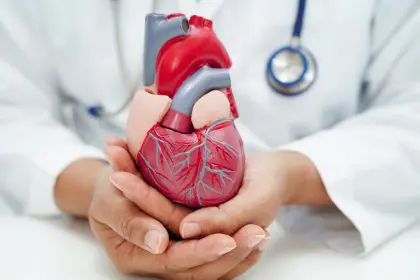Essential hypertension represents one of medicine’s most perplexing conditions, affecting nearly half of all adults yet defying simple explanations for its development. Unlike secondary hypertension, which stems from identifiable medical conditions like kidney disease or hormonal disorders, essential hypertension appears to emerge without any obvious underlying cause.
This mysterious form of high blood pressure accounts for approximately 95% of all hypertension cases, earning its designation as “primary” or “idiopathic” hypertension. The term “essential” doesn’t mean the condition is necessary or beneficial, but rather indicates that it exists independently without being secondary to another medical problem.
The absence of a clear, single cause doesn’t mean essential hypertension develops randomly. Instead, this condition results from a complex interplay of genetic predisposition, environmental factors, lifestyle choices, and physiological changes that accumulate over time to create sustained elevation in blood pressure readings.
Understanding the hidden mechanisms behind essential hypertension becomes crucial for both prevention and management. While medical professionals cannot point to one specific cause, they have identified numerous contributing factors that work together to create the perfect storm for elevated blood pressure development.
The challenge lies in recognizing that essential hypertension typically develops gradually over years or decades, making it difficult to identify the precise moment when normal blood pressure transitions to pathological levels. This slow progression often masks the underlying processes driving the condition until it reaches clinically significant levels.
1. Genetic programming beyond your control
Your genetic makeup plays a fundamental role in determining your likelihood of developing essential hypertension, with hereditary factors contributing to approximately 30-60% of blood pressure variation among individuals. Multiple genes influence different aspects of blood pressure regulation, creating a complex genetic landscape that predisposes some people to hypertension.
Family history serves as one of the strongest predictors of essential hypertension development. Having one parent with high blood pressure increases your risk by approximately 25%, while having both parents affected raises your risk to nearly 60%. These statistics reflect the powerful influence of inherited genetic variants on cardiovascular health.
Genetic variations affect how your kidneys handle sodium, how your blood vessels respond to various stimuli, and how your nervous system regulates blood pressure. Some people inherit genes that make their kidneys retain more sodium, leading to increased blood volume and higher pressure within their circulatory system.
Other genetic factors influence the production and activity of hormones that regulate blood pressure, including angiotensin, aldosterone, and various growth factors that affect blood vessel structure. These inherited differences in hormone function can create subtle but persistent elevations in blood pressure over time.
Ethnic background also influences genetic susceptibility to essential hypertension. Certain populations show higher rates of hypertension due to genetic adaptations that may have provided survival advantages in ancestral environments but create cardiovascular risks in modern settings with abundant salt and processed foods.
2. Kidney function abnormalities you cannot detect
Your kidneys play a central role in blood pressure regulation through their control of fluid balance, sodium excretion, and hormone production. Subtle abnormalities in kidney function can contribute to essential hypertension development long before any obvious signs of kidney disease become apparent.
Microscopic changes in kidney structure and function may begin decades before measurable decreases in kidney performance show up on standard blood tests. These early alterations affect the kidneys’ ability to excrete sodium efficiently, leading to gradual fluid retention and increased blood volume.
The relationship between kidney function and blood pressure creates a dangerous cycle where elevated blood pressure damages kidney blood vessels, which in turn worsens blood pressure control. This progression often occurs so gradually that neither patients nor healthcare providers recognize the deteriorating kidney function until significant damage has occurred.
Reduced nephron number, the functional units within your kidneys, may contribute to essential hypertension development. Some people are born with fewer nephrons due to genetic factors or developmental influences during pregnancy, creating a lifelong predisposition to blood pressure elevation as remaining nephrons work harder to maintain normal function.
Age-related changes in kidney structure and function also contribute to the increasing prevalence of essential hypertension in older adults. The gradual loss of kidney filtering capacity and changes in hormone production create conditions favorable for blood pressure elevation even in previously normotensive individuals.
3. Nervous system dysregulation you never notice
Your autonomic nervous system continuously adjusts blood pressure through complex feedback mechanisms involving your brain, nerves, and cardiovascular system. Dysregulation of these neural pathways contributes significantly to essential hypertension development through mechanisms that operate below the level of conscious awareness.
Chronic stress activation leads to persistent elevation of sympathetic nervous system activity, causing sustained increases in heart rate, cardiac output, and blood vessel constriction. Over time, these acute stress responses become permanently elevated, creating a new baseline of higher blood pressure.
Sleep disorders, particularly sleep apnea, disrupt normal autonomic regulation of blood pressure through repeated episodes of oxygen deprivation and arousal during sleep. These disruptions activate stress hormones and sympathetic nervous system responses that persist even during waking hours.
Baroreceptor dysfunction represents another hidden contributor to essential hypertension. These specialized pressure sensors in your blood vessels normally detect changes in blood pressure and trigger appropriate adjustments. When baroreceptors become less sensitive with age or disease, they fail to recognize elevated pressure as abnormal.
Psychological factors including chronic anxiety, depression, and personality traits like hostility can alter nervous system regulation of blood pressure. The mind-body connection influences cardiovascular function through neural pathways that translate emotional states into physiological changes affecting blood pressure control.
4. Insulin resistance and metabolic dysfunction
Insulin resistance, a condition where your cells become less responsive to insulin’s effects, contributes to essential hypertension through multiple interconnected mechanisms. This metabolic dysfunction often develops years before diabetes becomes apparent, creating hidden cardiovascular risks.
Elevated insulin levels associated with insulin resistance promote sodium retention by your kidneys, leading to increased blood volume and higher blood pressure. Insulin also stimulates your sympathetic nervous system, causing increased heart rate and blood vessel constriction that further elevates pressure readings.
The relationship between insulin resistance and hypertension involves complex interactions between glucose metabolism, fat storage, and cardiovascular function. Excess abdominal fat tissue produces inflammatory substances and hormones that interfere with normal blood pressure regulation mechanisms.
Metabolic syndrome, a cluster of conditions including insulin resistance, abdominal obesity, elevated triglycerides, and low HDL cholesterol, frequently accompanies essential hypertension. This syndrome represents a constellation of metabolic abnormalities that work together to increase cardiovascular disease risk.
Even individuals with normal body weight can develop insulin resistance due to genetic factors, dietary choices, or physical inactivity. This “metabolically obese, normal weight” phenotype demonstrates that metabolic dysfunction can contribute to hypertension regardless of overall body size.
5. Chronic low-grade inflammation throughout your body
Persistent, low-level inflammation throughout your cardiovascular system contributes to essential hypertension development through damage to blood vessel walls and disruption of normal pressure regulation mechanisms. This inflammatory process often remains undetected by routine medical testing.
C-reactive protein and other inflammatory markers frequently appear elevated in people with essential hypertension, suggesting that chronic inflammation plays a causative role rather than simply resulting from elevated blood pressure. This inflammation affects endothelial function, the inner lining of blood vessels that helps regulate vascular tone.
Oxidative stress, an imbalance between harmful free radicals and protective antioxidants, contributes to vascular inflammation and hypertension development. Environmental toxins, dietary factors, smoking, and even normal cellular metabolism can generate excess oxidative stress that damages blood vessel function.
Immune system dysfunction may also contribute to essential hypertension through inappropriate inflammatory responses within blood vessel walls. T-cells and other immune cells can infiltrate vascular tissue, releasing substances that promote inflammation and alter normal blood vessel function.
The gut microbiome, the collection of bacteria living in your digestive system, influences systemic inflammation and may contribute to blood pressure regulation. Imbalances in gut bacteria can promote inflammatory processes that affect cardiovascular health through the gut-heart axis.
6. Hormonal imbalances operating behind the scenes
Multiple hormone systems influence blood pressure regulation, and subtle imbalances in these systems can contribute to essential hypertension development. These hormonal changes often occur gradually and may not be detected by standard hormone testing.
The renin-angiotensin-aldosterone system represents a key hormonal pathway affecting blood pressure through its effects on blood vessel constriction and fluid retention. Genetic variations in this system can create lifelong tendencies toward elevated blood pressure even when hormone levels appear normal.
Cortisol, your body’s primary stress hormone, influences blood pressure through multiple mechanisms including effects on blood vessel function, sodium retention, and insulin sensitivity. Chronic elevation of cortisol, even within the normal range, can contribute to hypertension development over time.
Thyroid hormone imbalances, including subclinical thyroid dysfunction that doesn’t meet criteria for overt thyroid disease, can affect cardiovascular function and blood pressure regulation. Even minor alterations in thyroid hormone levels may contribute to hypertension in susceptible individuals.
Sex hormones including estrogen, testosterone, and progesterone influence blood pressure through effects on blood vessel function, fluid balance, and other cardiovascular regulatory mechanisms. Age-related changes in sex hormone levels contribute to the increasing prevalence of hypertension after menopause in women and with aging in men.
7. Environmental toxins and chemical exposures
Exposure to various environmental chemicals and toxins throughout your lifetime can contribute to essential hypertension development through mechanisms that may not become apparent for years or decades after initial exposure. These environmental factors often work synergistically with genetic and lifestyle factors.
Heavy metals including lead, mercury, and cadmium can accumulate in your body over time and interfere with normal cardiovascular function. Even low-level exposures that don’t cause acute toxicity symptoms may contribute to chronic health problems including hypertension.
Air pollution exposure, particularly fine particulate matter and other airborne contaminants, has been linked to increased blood pressure and cardiovascular disease risk. Urban environments with higher pollution levels show increased rates of hypertension among residents.
Endocrine-disrupting chemicals found in plastics, pesticides, and industrial products can interfere with normal hormone function and potentially contribute to blood pressure elevation. These chemicals may be particularly harmful during critical developmental periods or with chronic low-level exposure.
Occupational exposures to various chemicals, solvents, and industrial substances may increase hypertension risk through mechanisms that are still being studied. Workers in certain industries show higher rates of cardiovascular disease, suggesting that workplace exposures contribute to disease development.
8. Aging processes affecting every body system
Normal aging involves changes in cardiovascular structure and function that predispose to essential hypertension development even in the absence of other risk factors. These age-related changes begin in early adulthood and progress throughout life.
Arterial stiffening represents one of the most significant age-related changes contributing to hypertension. As blood vessels lose their elasticity over time, they become less able to accommodate the pulsatile flow of blood from your heart, leading to increased systolic blood pressure.
Changes in heart structure and function with aging can also contribute to blood pressure elevation. The heart muscle may thicken, chambers may stiffen, and electrical conduction may change, all affecting the cardiovascular system’s ability to maintain normal pressure relationships.
Kidney function naturally declines with age, reducing the body’s ability to excrete excess sodium and maintain optimal fluid balance. This age-related decline in kidney function contributes to the high prevalence of hypertension in older adults.
Hormonal changes associated with aging affect multiple systems involved in blood pressure regulation. Growth hormone, sex hormones, and other regulatory substances decline with age, potentially contributing to cardiovascular changes that promote hypertension development.
The interconnected web of causation
Essential hypertension rarely results from a single factor but rather emerges from the complex interaction of multiple contributing elements working together over time. Genetic predisposition creates the foundation, while environmental factors, lifestyle choices, and aging processes layer additional risk.
Understanding these hidden causes empowers individuals to recognize their personal risk factors and take appropriate preventive measures. While you cannot change your genetic makeup or completely avoid aging, many contributing factors remain modifiable through lifestyle interventions and medical management.
The key to preventing or managing essential hypertension lies in addressing multiple risk factors simultaneously rather than focusing on any single cause. Comprehensive approaches that include dietary modifications, regular physical activity, stress management, and appropriate medical care offer the best outcomes for blood pressure control.
Early detection and intervention become crucial given the silent nature of essential hypertension and its serious long-term consequences. Regular blood pressure monitoring, even in young adults, can identify developing hypertension before it causes irreversible cardiovascular damage.
The mystery surrounding essential hypertension continues to drive medical research as scientists work to unravel the complex mechanisms underlying this common but serious condition. Future advances in genetics, personalized medicine, and environmental health may provide new insights into prevention and treatment strategies for this pervasive health challenge.















